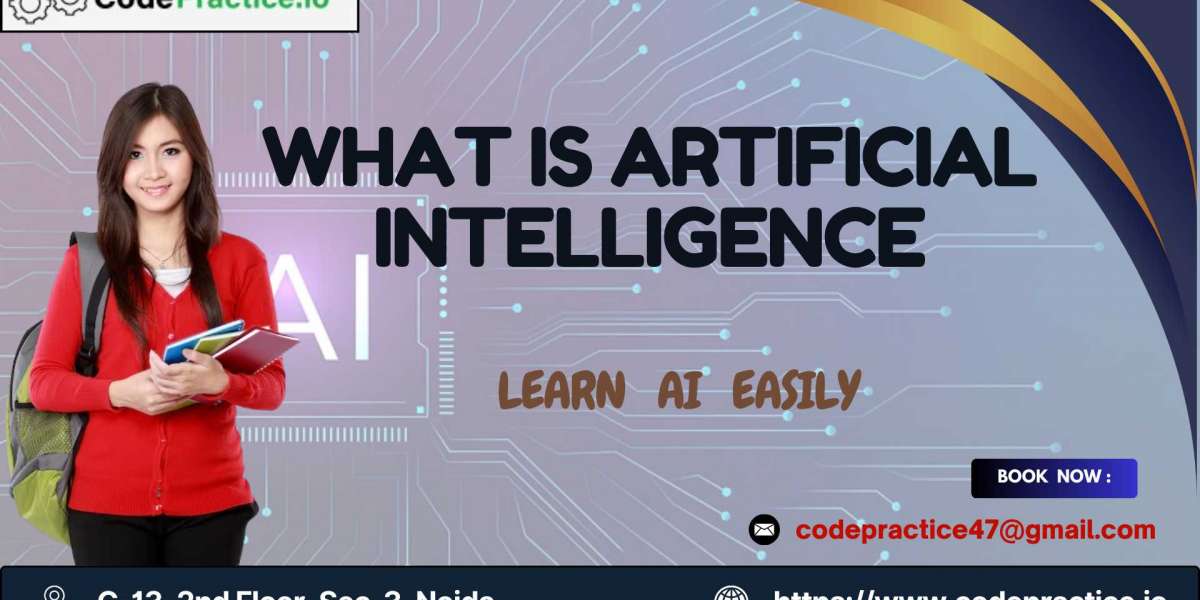Artificial Intelligence (AI) is rapidly changing the world we live in, from self-driving cars to personalized recommendations on streaming platforms. With applications in nearly every sector, AI is an essential field for anyone looking to stay ahead in the tech world. But for beginners, the journey into AI might seem intimidating. If you’re asking yourself, “What is Artificial Intelligence?” and wondering how to start learning it, then you’ve come to the right place. In this comprehensive artificial intelligence tutorial, we’ll guide you step-by-step through the basics of AI and help you get started on your AI journey.
What is Artificial Intelligence?
Before diving into any tutorial or practical work, it’s important to understand the fundamental concept of AI. What is Artificial Intelligence exactly? In simple terms, AI refers to the simulation of human intelligence in machines that are programmed to think, learn, and problem-solve. These machines use algorithms and data to replicate cognitive functions such as reasoning, decision-making, pattern recognition, and language understanding.
There are two primary types of AI:
- Narrow AI (Weak AI): This is the most common form of AI today, designed to perform specific tasks like facial recognition, spam email filtering, or voice assistants such as Siri or Alexa. It operates within predefined parameters and doesn’t possess general intelligence.
- General AI (Strong AI): This form of AI, which is still theoretical, would be able to perform any intellectual task that a human can do, exhibiting human-like cognition, emotions, and problem-solving abilities. General AI remains a long-term goal for researchers.
AI is a broad field encompassing various sub-disciplines such as machine learning, deep learning, natural language processing, and robotics. Understanding these key concepts will help you build a strong foundation as you progress in your learning.
Key Concepts of AI
Now that we’ve defined what AI is, let’s explore some of the key concepts you’ll encounter in any artificial intelligence tutorial. Familiarity with these terms is essential to understanding how AI systems work.
- Machine Learning (ML)
Machine learning, a subset of AI, focuses on the idea that systems can learn from data and improve their performance over time without being explicitly programmed. Instead of following static instructions, machine learning models identify patterns in data and use these patterns to make predictions or decisions. There are three main types of machine learning:
- Supervised Learning: The model is trained using labeled data, meaning each input is paired with the correct output. The goal is for the model to learn the relationship between input and output so it can make accurate predictions on new data.
- Unsupervised Learning: In unsupervised learning, the model is given data without labels, and it must find hidden patterns or structures within the data. Clustering and anomaly detection are common tasks in unsupervised learning.
- Reinforcement Learning: In reinforcement learning, an agent interacts with its environment and learns by receiving rewards or penalties based on its actions. This type of learning is often used in robotics and game AI.
- Neural Networks and Deep Learning
Neural networks are a fundamental concept in AI, especially in the subfield known as deep learning. These networks are modeled after the human brain, with layers of interconnected nodes (or "neurons") that process and transform data. Neural networks excel in tasks like image recognition, speech recognition, and natural language processing.
Deep learning, a subset of machine learning, involves using neural networks with many layers, allowing models to learn from vast amounts of data and extract complex patterns. For example, convolutional neural networks (CNNs) are often used for image classification tasks, while recurrent neural networks (RNNs) are used for tasks that involve sequences, such as language translation.
- Natural Language Processing (NLP)
Natural Language Processing (NLP) enables machines to understand, interpret, and generate human language. It allows AI systems to process text or speech and respond in a way that makes sense in context. From chatbots to voice assistants like Alexa and Siri, NLP plays a crucial role in making AI systems more user-friendly. NLP tasks include sentiment analysis, language translation, and text summarization.
- Computer Vision
Computer vision is a field of AI that enables machines to interpret and understand visual information from the world. It involves tasks like object detection, image classification, and facial recognition. With computer vision, AI systems can identify objects in images or videos, making it a crucial component of technologies like self-driving cars, medical imaging, and augmented reality.
Getting Started with AI: Step-by-Step Tutorial
Now that you have a basic understanding of what AI is and some key concepts, let’s break down a step-by-step process to help you begin your journey in AI. This artificial intelligence tutorial will guide you on how to get started, what tools to use, and how to apply your knowledge through practical projects.
Step 1: Learn Programming
The first step in any AI journey is learning a programming language. Python is the most widely used language in AI and machine learning due to its simplicity, readability, and vast ecosystem of libraries and frameworks.
If you’re new to Python, start with the basics such as variables, loops, functions, and object-oriented programming. Once you’re comfortable with Python, you can move on to libraries such as:
- NumPy and Pandas for data manipulation and analysis
- Matplotlib and Seaborn for data visualization
- scikit-learn for machine learning algorithms
- TensorFlow and PyTorch for deep learning
Step 2: Understand the Mathematics Behind AI
A solid understanding of mathematics is crucial for working with AI. While you don’t need to be a math expert, key areas to focus on include:
- Linear Algebra: Essential for understanding how data is represented in AI models, especially in deep learning.
- Calculus: Helps understand how algorithms learn by optimizing parameters.
- Probability and Statistics: Critical for making predictions and evaluating model performance.
You can find various online courses and tutorials that explain these mathematical concepts in the context of AI.
Step 3: Learn Key AI Concepts and Algorithms
With Python under your belt and a basic understanding of math, it’s time to dive deeper into the specific algorithms and models that power AI. Some key concepts to explore are:
- Linear Regression and Logistic Regression for predictive modeling
- Decision Trees and Random Forests for classification
- K-Nearest Neighbors (KNN) for classification tasks
- Support Vector Machines (SVM) for both regression and classification
- Neural Networks for more advanced tasks like image recognition
You can experiment with these algorithms using libraries like scikit-learn, which provide easy-to-use implementations.
Step 4: Work on Hands-On Projects
The best way to solidify your learning is by building projects. Here are a few ideas to get you started:
- Predicting Housing Prices: Use a machine learning algorithm to predict housing prices based on features like location, square footage, and number of bedrooms.
- Handwritten Digit Recognition: Use a neural network (such as a CNN) to recognize handwritten digits from the MNIST dataset.
- Chatbot Creation: Use NLP techniques to create a chatbot that can answer simple questions or engage in conversation.
These projects will give you practical experience and help you apply the concepts you’ve learned.
Step 5: Stay Updated and Keep Learning
AI is a constantly evolving field, with new algorithms, research, and tools emerging regularly. To stay updated:
- Follow AI blogs and research papers from sites like arXiv and Google AI.
- Participate in online communities like Kaggle, where you can work on datasets, compete in challenges, and learn from others.
- Take online courses from platforms like Coursera, edX, or Udacity to deepen your knowledge.
Conclusion
Artificial Intelligence is an exciting and rapidly advancing field, and there’s never been a better time to start learning. By following this artificial intelligence tutorial, you now have a solid understanding of the foundational concepts and practical steps to begin your AI journey. Remember, AI is a broad and evolving field, so don’t rush—take your time to explore different subfields, experiment with projects, and keep learning. With dedication and curiosity, you’ll be on your way to becoming an AI expert!







